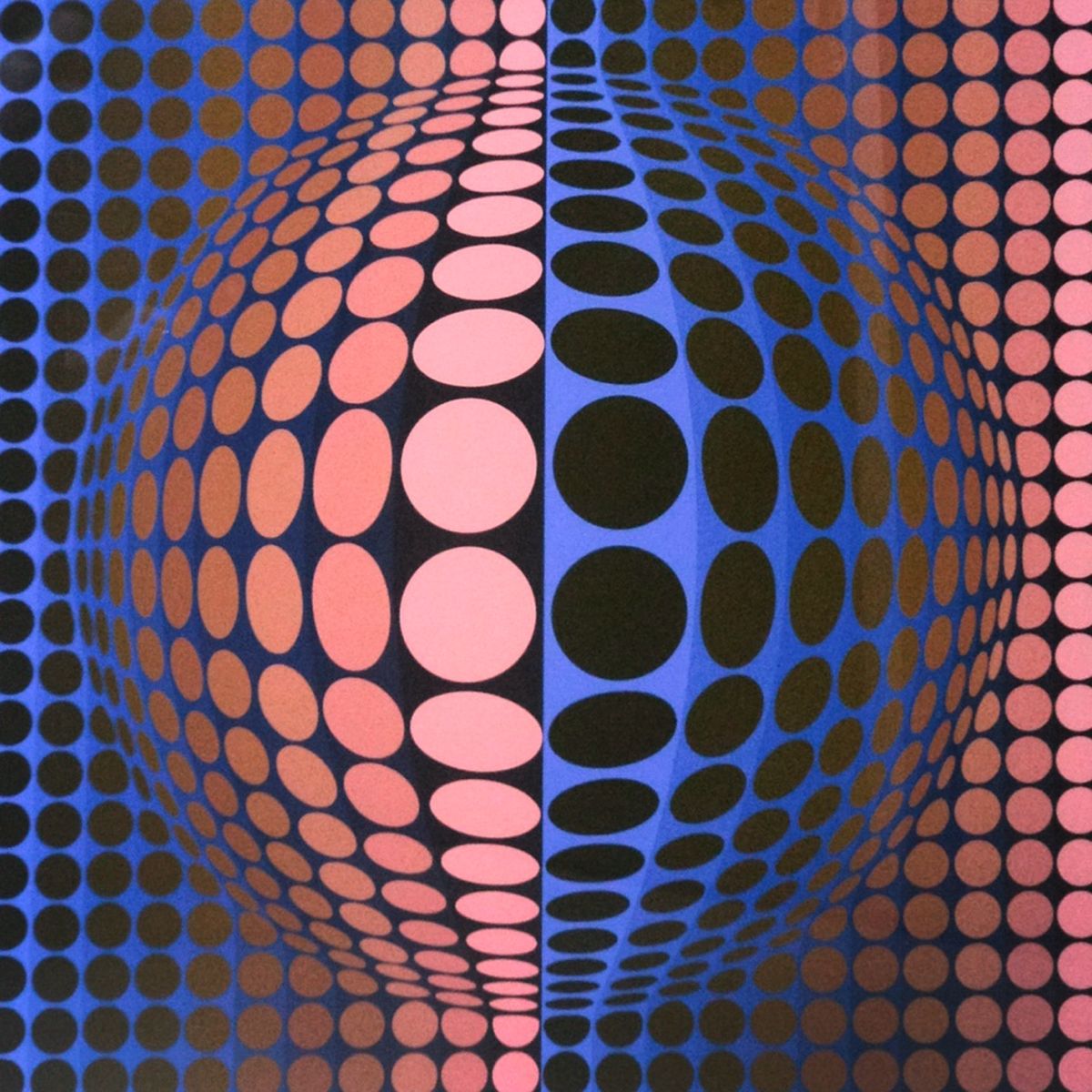
A – Example: Victor Vasarley
1906 - 1997
Hungarian-born artist and graphic designer Victor Vasareley has been hailed as the ‘father of op-art’. His early training was at the Muhely Academy, then renowned as the Bauhaus School at Budapest. In 1930 he moved to Paris and joined Galerie Denise René where he developed his concept of ‘plastic kinetics’ and unique op-art style. By the end of WWII, Vasarely’s work was entirely abstract and increasingly based on geometry, and often drawing on the sciences – physics, magnetic fields, biochemistry, and astronomy – for his subject matter.
Vega-fel is an example of a large body of work by Vasarely featuring a spherical distortion of a grid, using colour to push or pull the eye to create the illusion of three dimensional form. The title was taken from the name of the brightest star in the Lyra system, Vega was the first star other than the Sun to be photographed and the first to have its spectrum recorded. Since the 1940s, scientists have used Vega’s spectrum as one of the stable anchor points against which all other stars are classified.
Vasarely’s legacy in his paintings, sculpture, and graphic design, as well as his lesser well-known work in film and architectural design has earned him a prominent place in the history of modern art and design. In 1976 the Vasarely Museum opened in the artist’s birthplace in Pécs, Hungary, and in the same year, he established the Centre for Architectonic Research and the Vasarely Foundation in Aix-en-Provence, France. To permanently house his works, the Vasarely Center opened in New York City in 1978 and the Centre Vasarely in Oslo, Norway, in 1982. In 1987 a further Vasarely museum opened in Zichy Palace in Budapest, Hungary.
Janet Ollevou
Curator, Colour on the Concrete
